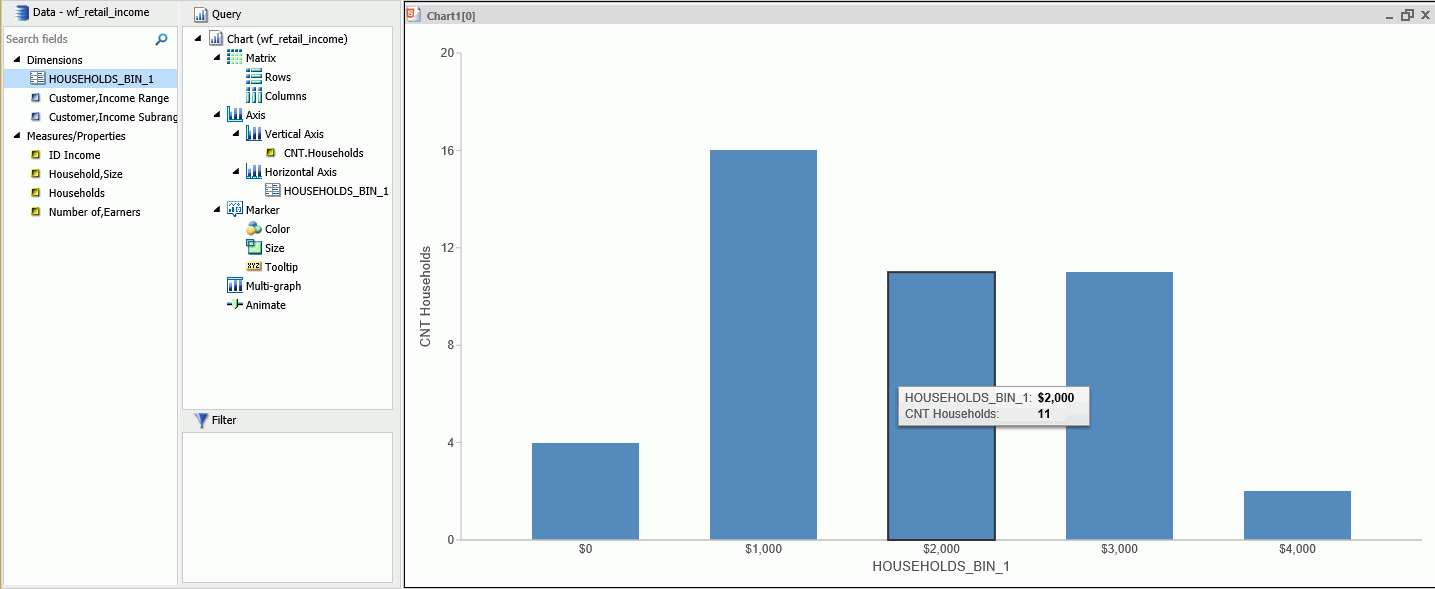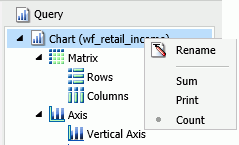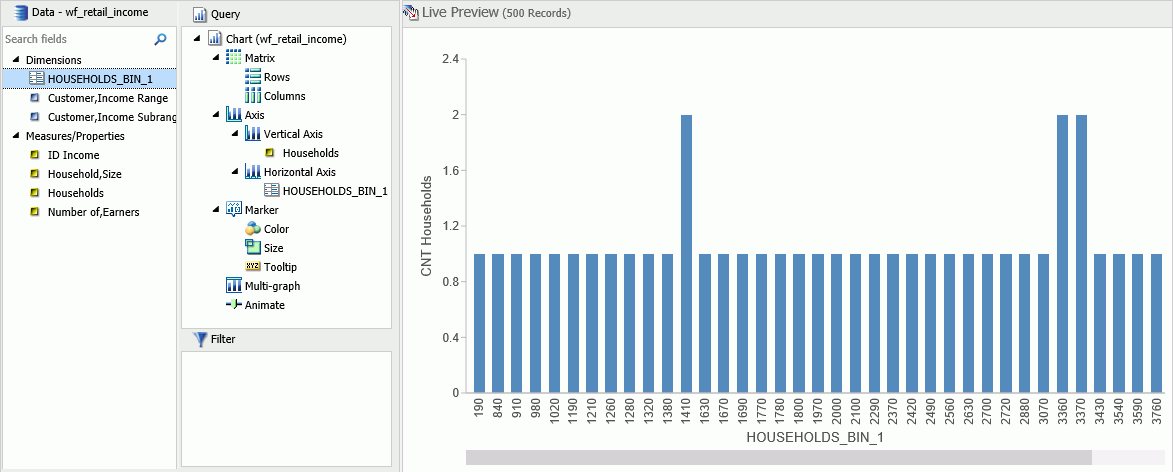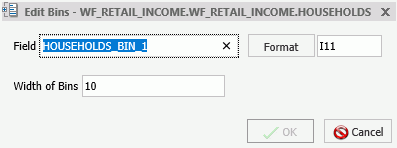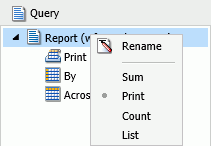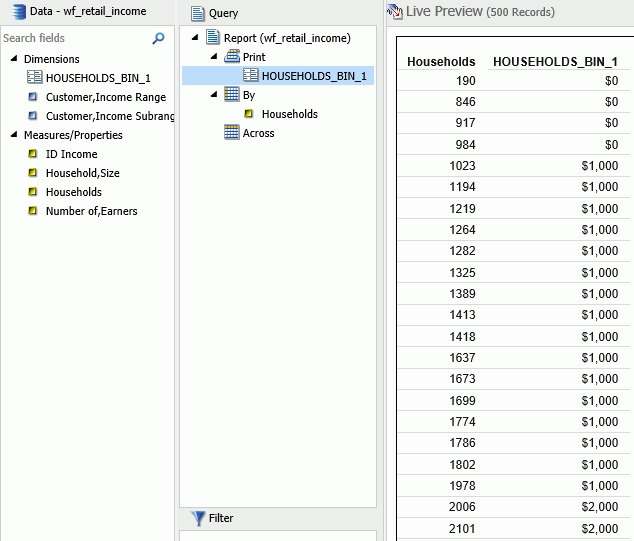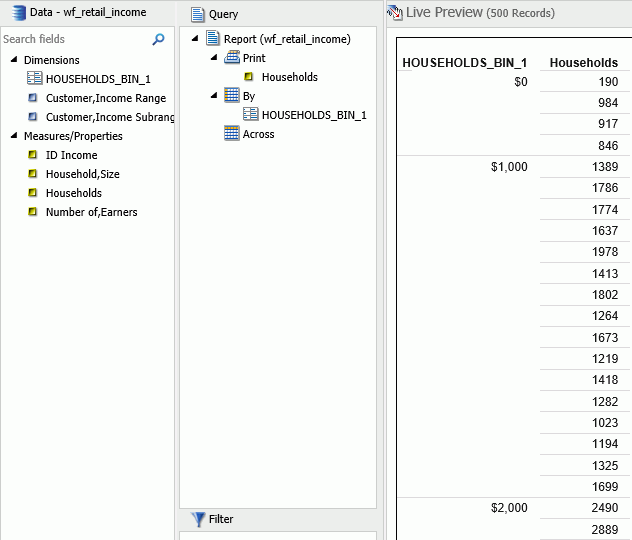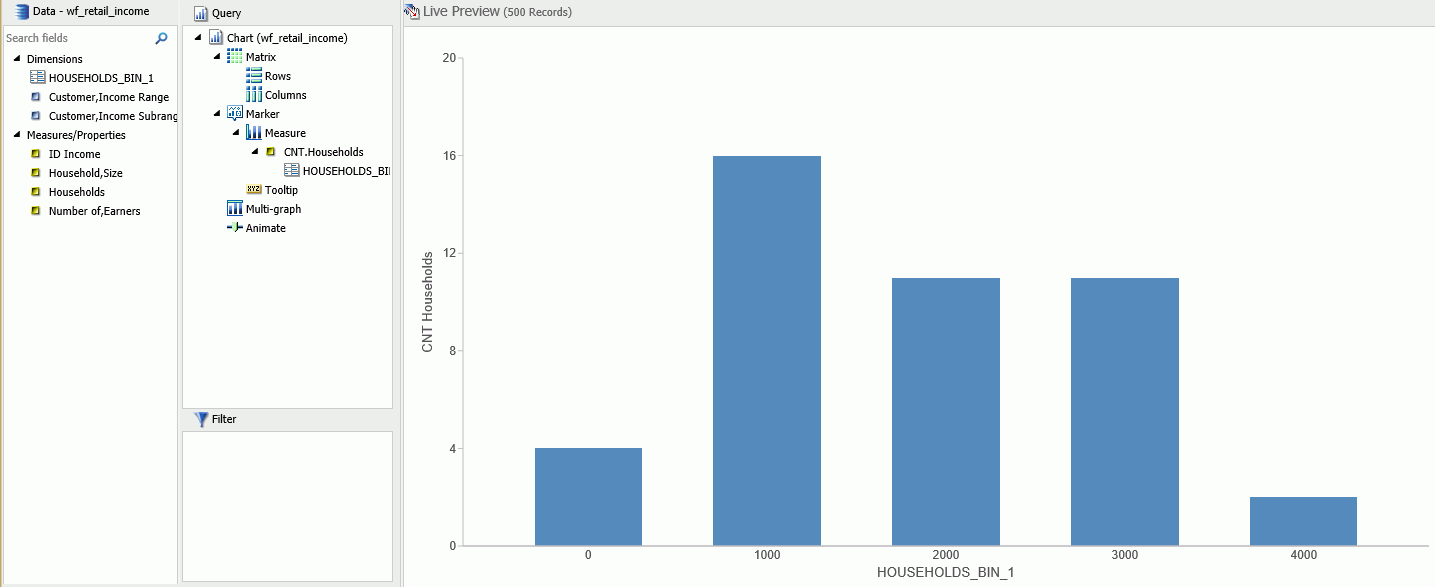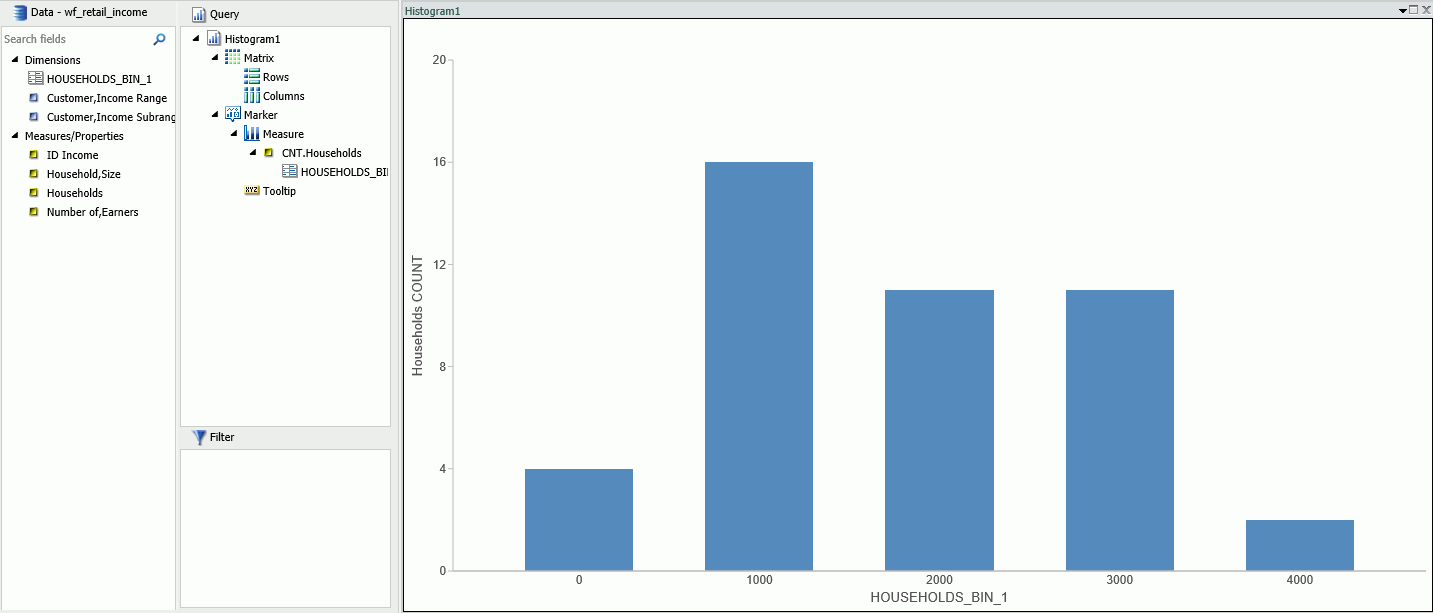Binning is a powerful tool for analyzing your data using ranges that you define.
Binning enables you to determine the frequency of values across the entire range of values. It is used for analyzing a frequency
distribution. With binning, you can create discrete buckets of continuous data that control how groups of your data display.
In addition, binning gives you the ability to review trends and spot outliers.
For example, you can review the range of expenses incurred by households. In the following example, these ranges are represented
by bins that are grouped by $1000. In this case, you can see that the largest number of households had the smallest expense
(16) while the trend declines as the bin size gets larger. With binning, you can see the frequency of how often values in
a range appear across the different groupings, as shown in the following image.
In InfoAssist, bins are automatically created
for Histograms. You can change the size of your bins
to meet the requirements of your data. For example, if your data
has very large values (for example, in billions) you might want to
create larger bins. You can also create bins manually in Vertical
bar charts and reports.
Note: When creating a bin, the format of the bin and the value set for the Width of Bins must be compatible. If the Width of Bins
is a large decimal value, define the field format to match the format of the field being converted so that the bins can be
successfully generated with the appropriate numeric precision.
Binning is available for the different output types, including reports, charts, and visualizations, depending on how you
choose to display and analyze your data.
Binning Values in a Histogram
Histograms graphically represent the distribution of numeric data. They facilitate the identification and discovery of the
underlying frequency distribution within a set of continuous data. You can use histograms to identify trends and illustrate
categorizations, or groupings, also known as bins. For more information, see Binning.
Histograms use bins to group data. Bins allow you to establish a range of values for your data. For example, you can review
how the bins are designated when you consider the age of everyone in your company. In the first table, you can review the
bins (using the default value of 10) and counts for each bin.
|
AGE
|
COUNT
|
|
0-9
|
0
|
|
10-19
|
5
|
|
20-29
|
26
|
|
30-39
|
351
|
|
40-49
|
460
|
|
50-59
|
310
|
|
60-69
|
285
|
|
70-79
|
22
|
|
80-89
|
3
|
|
Total
|
1462
|
In the second table, you can review the same data for the bins (with a bin width of 15) and counts for each bin. Notice that
as the bin size gets larger, more employees fall into these different ranges.
|
AGE
|
COUNT
|
|
0-14
|
0
|
|
15-29
|
31
|
|
30-44
|
611
|
|
45-59
|
510
|
|
60-74
|
296
|
|
75-89
|
14
|
|
Total
|
1462
|
When you create a histogram in either Chart or Visualization mode, a bin is created automatically for the measure you select.
When working with bins, you can change the width of the bin by editing it. In the Query or Data pane, right-click a bin field
and click Edit Bins to change the value that dictates the width or format of the contents of the bin.
The bin value is designated as a dimension field, since it is a limited field with a discrete set of possible values that
was created from a field with an unlimited, continuous range of values. The measure displays as a count (.CNT) field and the
related bin is created in the Query pane. It is also placed in the Data Pane for future use.
Procedure: How to Create a Histogram with Automatic Binning in Chart Mode
- Open InfoAssist in Chart mode.
- On the Format tab in the Chart Types group, click Other.
- In the Bar group of charts, click Vertical Histogram.
- Click OK.
- From the Data pane, drag a measure into the Measure field container in the Query pane.
A histogram is automatically created using the measure you selected along with a generated bin, as shown in the following
image.
Note: This process produces the same results as if you had created the histogram manually, however it automatically converts the
measure to a count (.CNT) field. It also creates the bin for you, placing it on the x-axis, accordingly.
Procedure: How to Create a Histogram with Automatic Binning in Visualization Mode
- Open InfoAssist in Visualization mode.
- On the Home tab, in the Visual group, click Change.
- In the Select a Visual dialog box, click Histogram.
- From the Data pane, drag a measure into the Measure field container in the Query pane.
A histogram is automatically created using the measure you selected along with a generated bin, as shown in the following
image.
You can optionally edit the bin to change its width or format. For information on building a histogram manually, in Chart
mode, see Binning.
